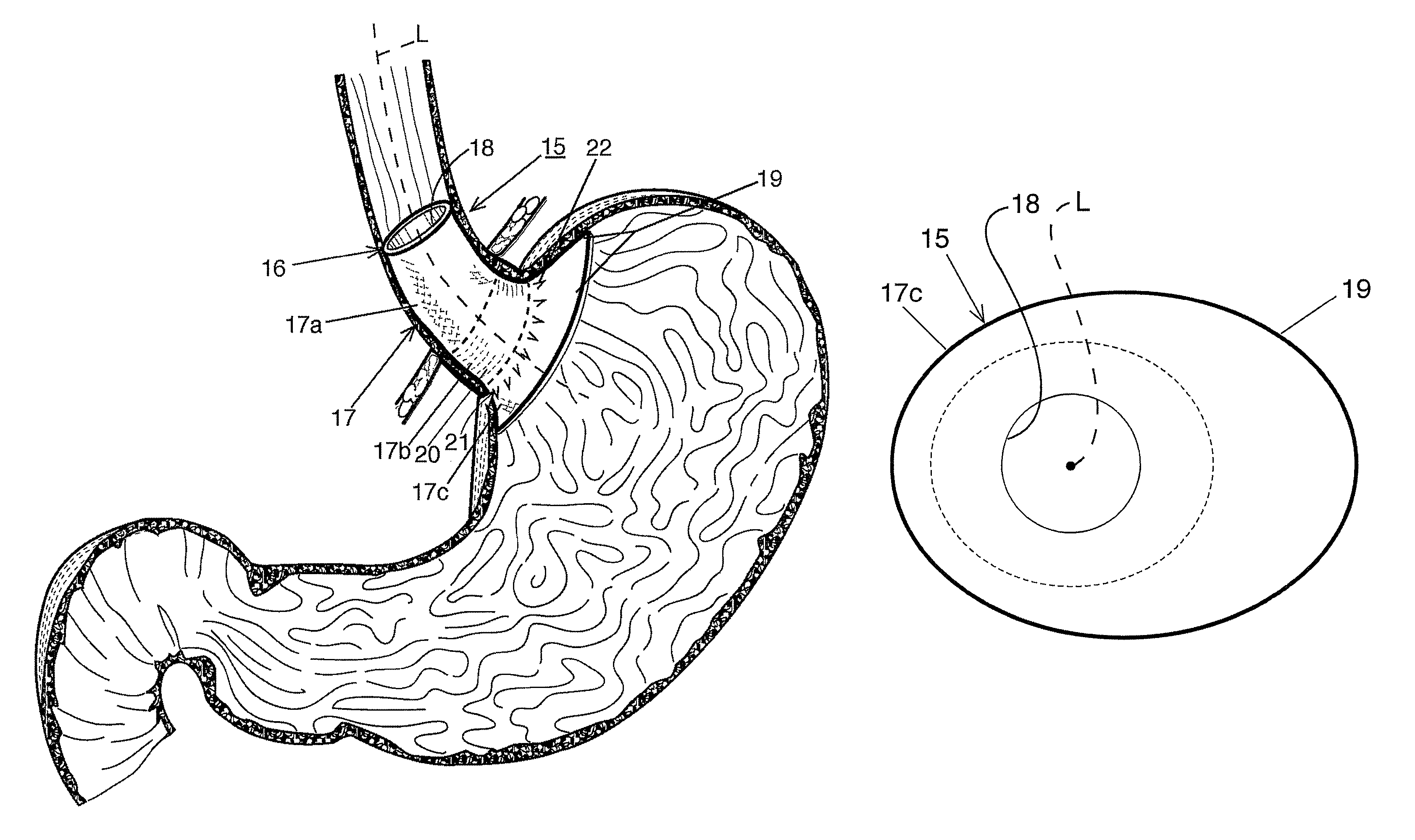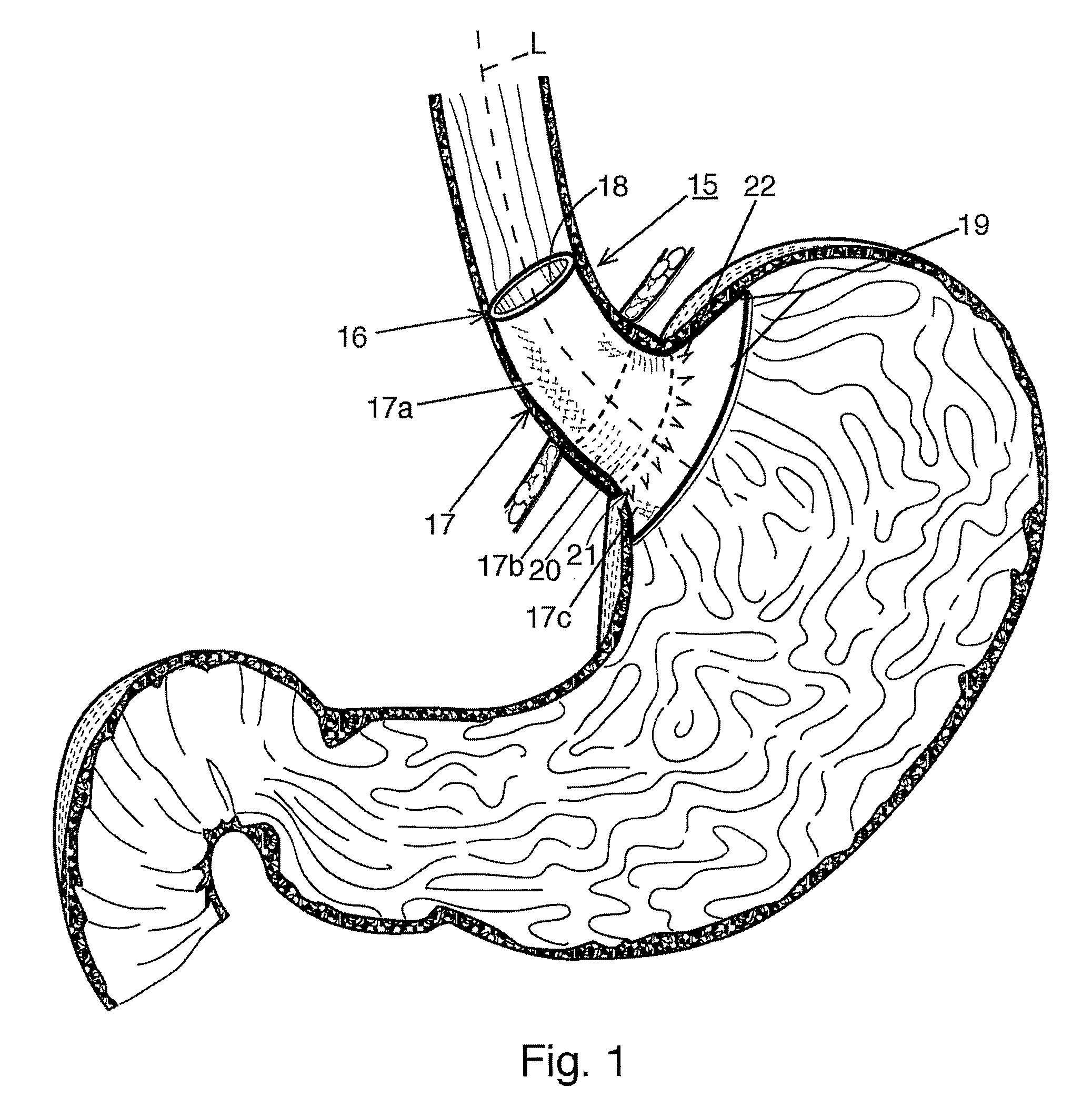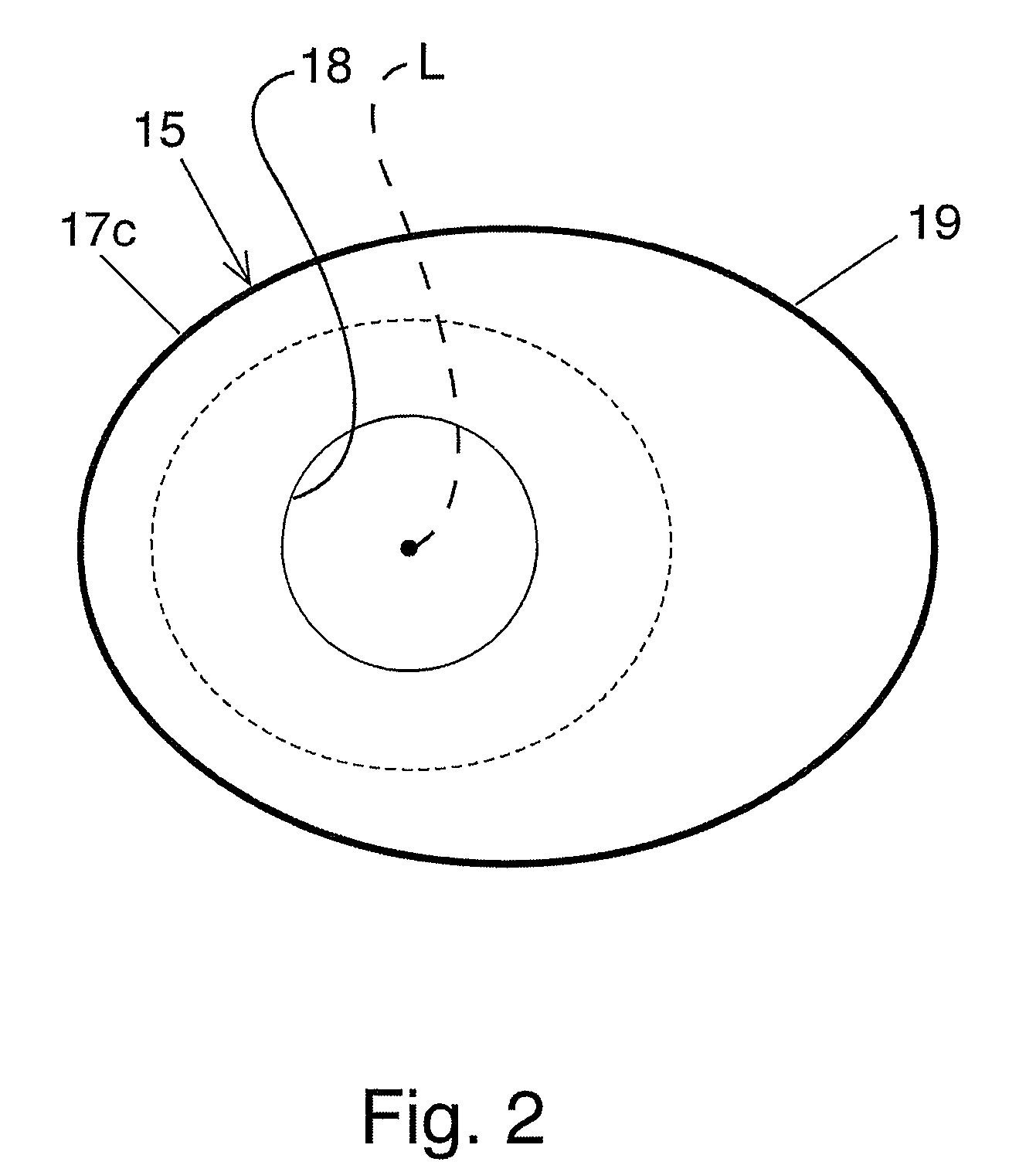Bariatric device and method
a bariatric device and a technology of bariatric tubes, applied in the field of bariatric tubes and methods, can solve the problems of large and increasing obesity, high invasiveness, and large patient population, and achieve the effects of minimal invasiveness, avoiding many of the potential side effects, and reducing obesity
- Summary
- Abstract
- Description
- Claims
- Application Information
AI Technical Summary
Benefits of technology
Problems solved by technology
Method used
Image
Examples
Embodiment Construction
[0041]Referring now specifically to the drawings, and the illustrative embodiments depicted therein, a bariatric device, or implied satietor, 15, which causes satiety by acting on the abdominal portion of the esophagus, and / or the esophageal-gastric junction and / or the proximal cardiac portion of the stomach, is illustrated in FIG. 1 being positioned in the patient. Device 15 includes a body 16 having a expandable wall 17 thereby defining a transverse passage, or lumen 18 through the body. Body 16 is designed to conform to the shape and size of the abdominal portion of the esophagus, the esophageal-gastric junction and / or the proximal cardiac portion, or cardia, of the patient's stomach. The present invention is embodied in various bariatric devices. The devices may be removable, absorbable and / or permanent. The devices may be manufactured from a synthetic or a bioprosthetic material. While the invention is illustrated with a mesh wall, other configurations are possible, such as coi...
PUM
 Login to View More
Login to View More Abstract
Description
Claims
Application Information
 Login to View More
Login to View More - R&D
- Intellectual Property
- Life Sciences
- Materials
- Tech Scout
- Unparalleled Data Quality
- Higher Quality Content
- 60% Fewer Hallucinations
Browse by: Latest US Patents, China's latest patents, Technical Efficacy Thesaurus, Application Domain, Technology Topic, Popular Technical Reports.
© 2025 PatSnap. All rights reserved.Legal|Privacy policy|Modern Slavery Act Transparency Statement|Sitemap|About US| Contact US: help@patsnap.com



